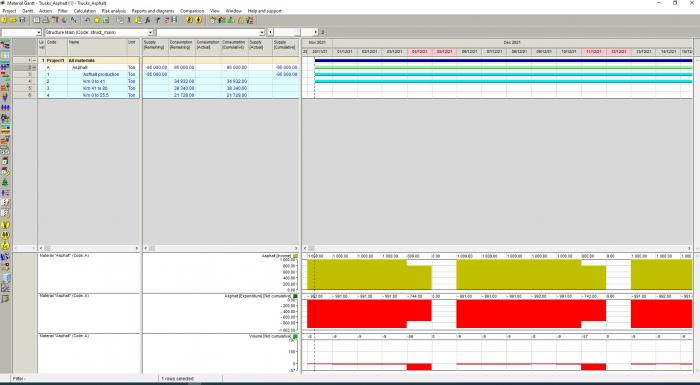Hi my friends,
I would like to discuss some cases that I faced today. I'm leveling material from Spider but, I think that algorithm always considers that if you do not use the material in each period the same material goes to another period for use. The cumulative concept that's right for materials like bricks, gravel, cement and others but, for leveling composite materials like concrete and asphalt, that do not consider stock in real life the way is different. Spider have some key for not considering this? According picture bellow the leveling works very well because Spider consider that quantity not consumed (8units) in 11/30/21 will be cumulate and will consumed 12/01/21 together other, even resource Truck do not capacity (992units consumed) faced (1000units income (produced)). In systems where the material is produced and this product must be 100% used the stock concept is right? Have some way to consider this situation?
Follow file link,
https://we.tl/t-cK8c6F8ewd
Best Regards,
Daniel Morais



























Replies